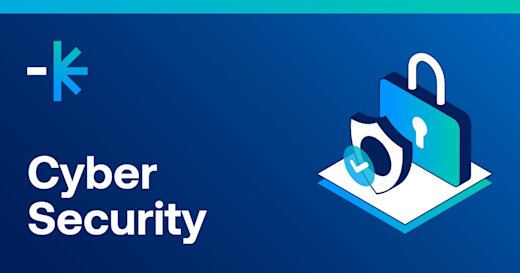By now, the debate is over. Communication isn't a soft skill but rather a cornerstone of success. Learning how to improve communication skills in the workplace is non-negotiable whether you're collaborating on projects, seeking support from colleagues or aligning expectations.
The Microsoft MS-4004/MS-4018 - Empower the Workforce with Copilot and Understand Prompt Engineering course helps you level up your workplace communication. This Copilot training teaches end users to craft effective prompts for M365 Copilot.
How to improve communication skills and embrace innovation
AI has transformed communication into a technical skill, requiring individuals to adapt and harness its capabilities. Charles Duhigg is a Pulitzer Prize-winning reporter, author and expert on productivity. In the Microsoft WorkLab podcast, he talks about how to improve communication skills in the workplace, emphasising the need to integrate AI to enhance conversational skills.
Clearly articulating what you want and why you need it determines the quality of responses from other people and AI. Charles Duhigg shares his advice on becoming a “super communicator,” incorporating emotional intelligence and self-awareness to exceed average interactions.
Tip#1: Communication is now a technical skill.
In the age of AI, forward-looking leaders are already prioritising communication skills when they hire. Duhigg says:
"We’re already seeing more and more emphasis on communication ability as something that employers are looking for. The ability to show during an interview that you can communicate and connect well with others is going to tell that interviewer something about how you also interact with technology, and that’s going to be powerful."
The data aligns with this, too:
81% of recruiters identify interpersonal skills (including communication) as important—more than any other kind of skills, according to MBA.com.
Enhanced communication technology and training can boost team productivity by as much as 30%, according to MarketSplash.
Tip#2: Get more from AI when you get more conversational.
Effective communication goes beyond the transfer of information; it conveys tone and intent. With AI becoming increasingly conversational, the ability to communicate emotions to both humans and AI is paramount. Write your prompts how you and your customers and stakeholders speak to each other.
By mastering this aspect, you can foster deeper connections and clarity in their interactions. Learn best practices for using Microsoft 365 Copilot. Get tips on being conversational. Understand the critical elements of an effective prompt through M365 copilot training.
According to Duhigg:
“The future of tech is going to be more and more like having a conversation and less like using a calculator,” Duhigg says. If you ask AI questions about how it got to an answer, or what other questions it thinks you should ask, it’ll reveal interesting and useful things, and open new avenues of inquiry.”
Tip#3: Communicate emotion to people and AI.
Gone are the days when business-to-business communication meant sending information to institutions. There are people within these groups making business decisions. And these people have feelings, too—frustration, excitement and curiosity.
With AI, emotion boosts effective communication even more. While AI can parse and generate data, emotional prompts can train it to focus on areas or spot biases. Writing a prompt for a cyber security role description can read something like:
Please write me a job description for a cyber security specialist. Include details on the technical qualifications along with the ethics and values based on them. We are determined to attract and welcome trustworthy people to the team.
If you want to improve communication skills, you must understand how offering context helps engage others -- whether it’s a person or an AI assistant. Emotional instructions combined with existing records can help generate new ideas, new content, and FAQs beyond the ordinary. Your content can be more relevant to your team and compelling to your target audience.
Tip#4: Explain what you need to understand what you need.
Determining your goal with any communication you put out is always good. How do you map out what happened so far? What do you want people to do after receiving your message? What are your expectations?
Clear communication hinges on articulating needs succinctly and understanding requirements thoroughly. Whether interacting with colleagues or AI, the ability to explain what you need facilitates smoother collaboration and problem-solving.
Charles Duhigg says:
“One of the reasons why conversation is so useful is because not only does it help us understand another person, it helps us understand ourselves. Sometimes we learn things just in what we say to AI, and then sometimes we learn things from what the machine responds with. And then there are times when I don’t even understand what question I want to ask AI, and it ends up helping me understand what I’m trying to get at.”
You can learn to use Copilot to summarise or extract essential information from Word documents, Excel tables and PowerPoint presentations. You can do this with chats and meetings, too. Once you've summarised the information, you can use Copilot to draft agendas, to-do lists and project plans.
Tip#5: Use AI to improve communication skills in other contexts.
From negotiations to interviews, you can learn how to improve your communication skills in the workplace. Use AI as a sounding board. Explore different scenarios, expect possible questions and objections or prepare for difficult conversations. You can navigate various professional scenarios with confidence and finesse.
According to Duhigg, researchers teaching negotiation skills recommend that their students practice with AI and pay attention to what surprises them. What objections do they raise? How do they come back that catches you off guard?
You can use email coaching with Copilot in Outlook. Suppose you have an important email to write to a senior stakeholder. And you want to feel confident that it effectively conveys your intended message. Get suggestions on adjusting the tone, clarity and reader sentiment before you hit send. You can also use it to draft new emails and compose replies.
Unlocking Potential with Lumify Group
Lumify Group provides transformative learning experiences. The Microsoft MS-4005 - Craft Effective Prompts for Microsoft 365 Copilot course equips professionals with the skills to craft effective prompts for M365 Copilot. Explore real world scenarios and examples using Copilot in Microsoft 365 apps like Word, Excel, PowerPoint, Teams, Outlook, OneNote and Chat. Through hands-on learning experiences and practical insights on leveraging AI for seamless communication.
Via Lumify Work, we can offer 10 fully equipped training campuses (with 60 classrooms) located in key business centres around Asia Pacific. You can visit us in Sydney, Melbourne, Adelaide, Brisbane, Perth and Canberra in Australia.
Through Nexacu, we can further enrich the learning journey. As the leading provider of instructor-led Microsoft Application training for end-users in APAC, we can ensure that participants gain actionable skills that drive tangible results.
Ask us about offerings like Lumify Anywhere. We can train your team on-premises or deliver state-of-the-art remote instructor-led training. Full HD video and audio create a virtual classroom experience and access to our expert instructors.
By embracing M365 Copilot training and leveraging innovative solutions, you can foster a culture of effective communication and collaboration. Access our Data Analytics & AI eBook or enquire about AI & Machine Learning courses and training paths.








